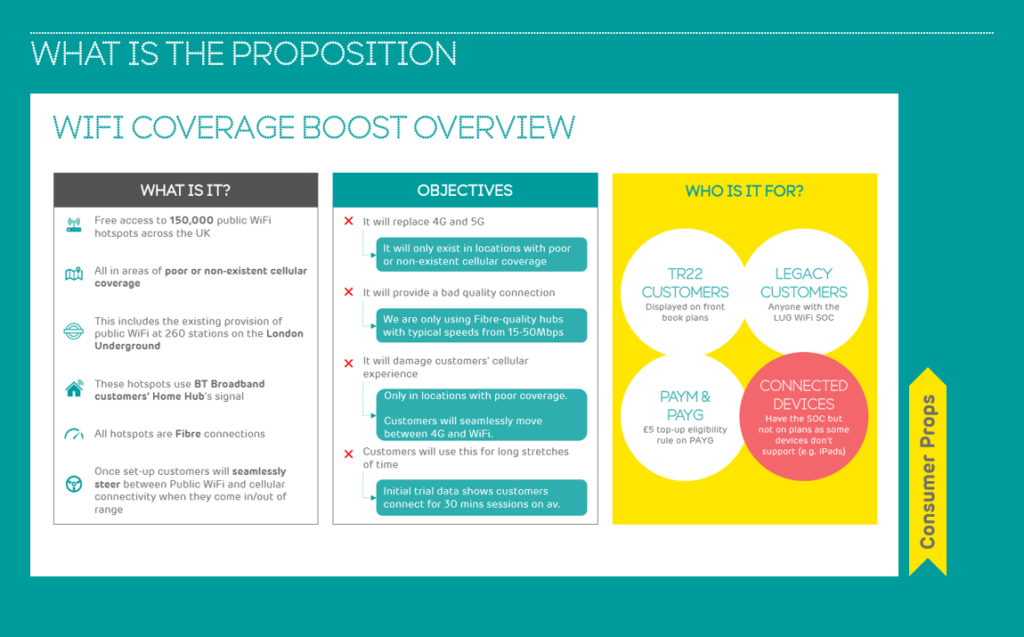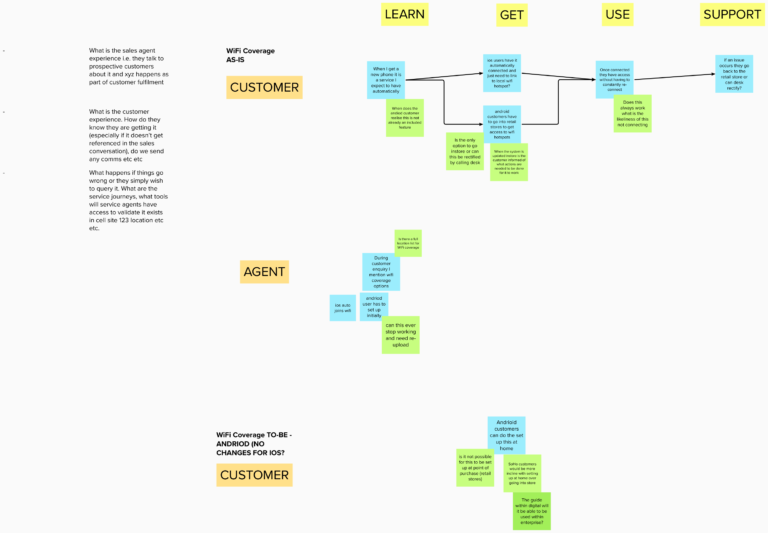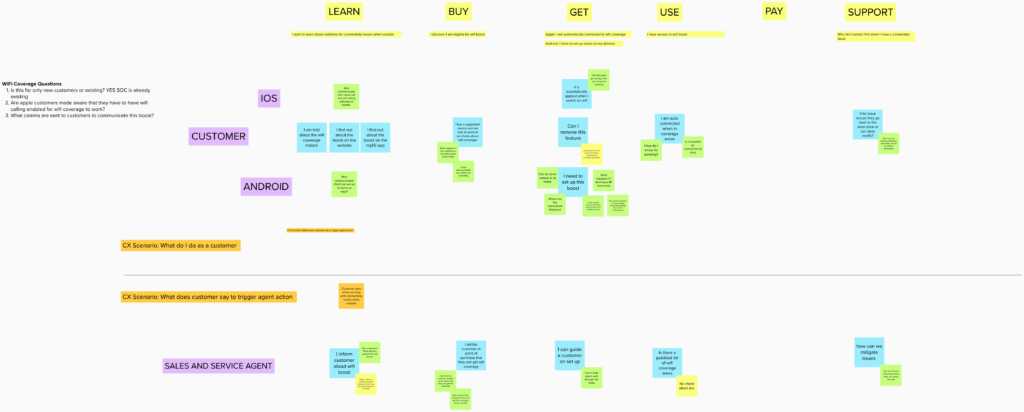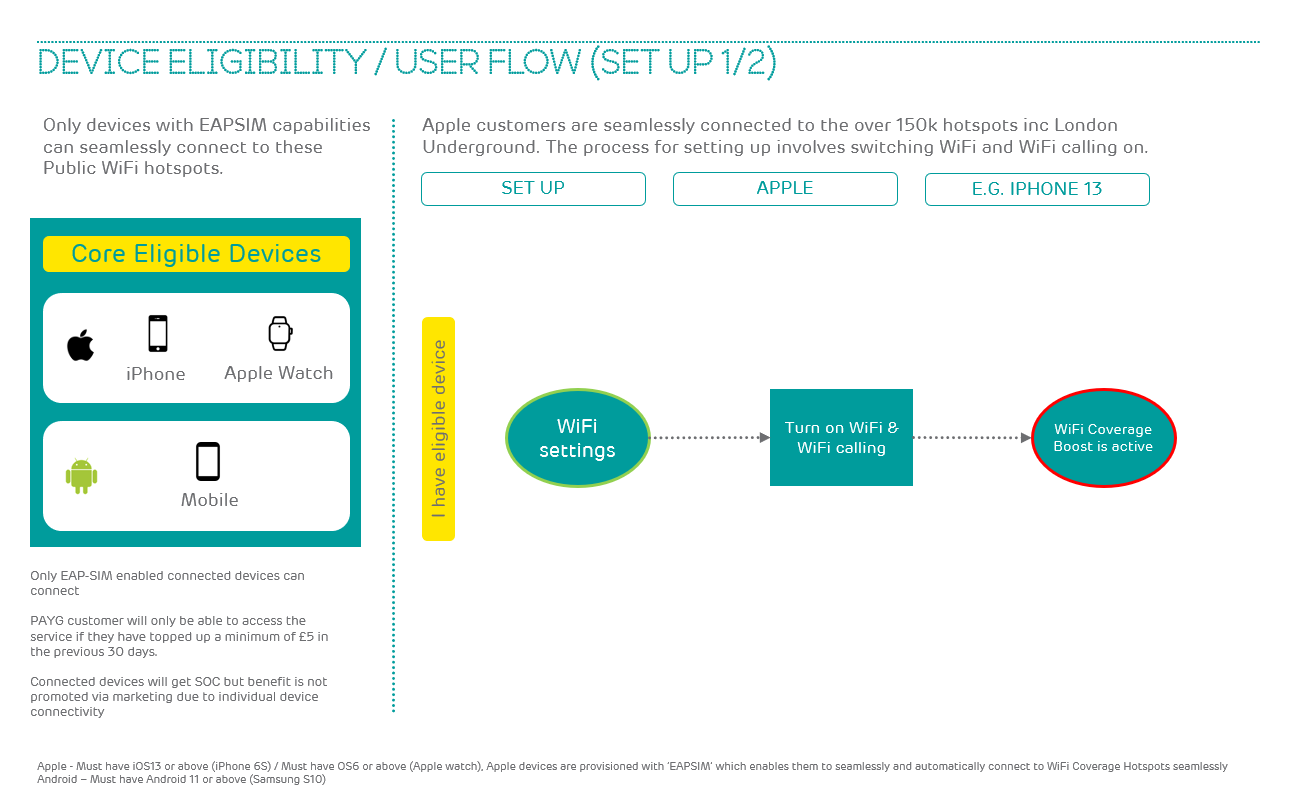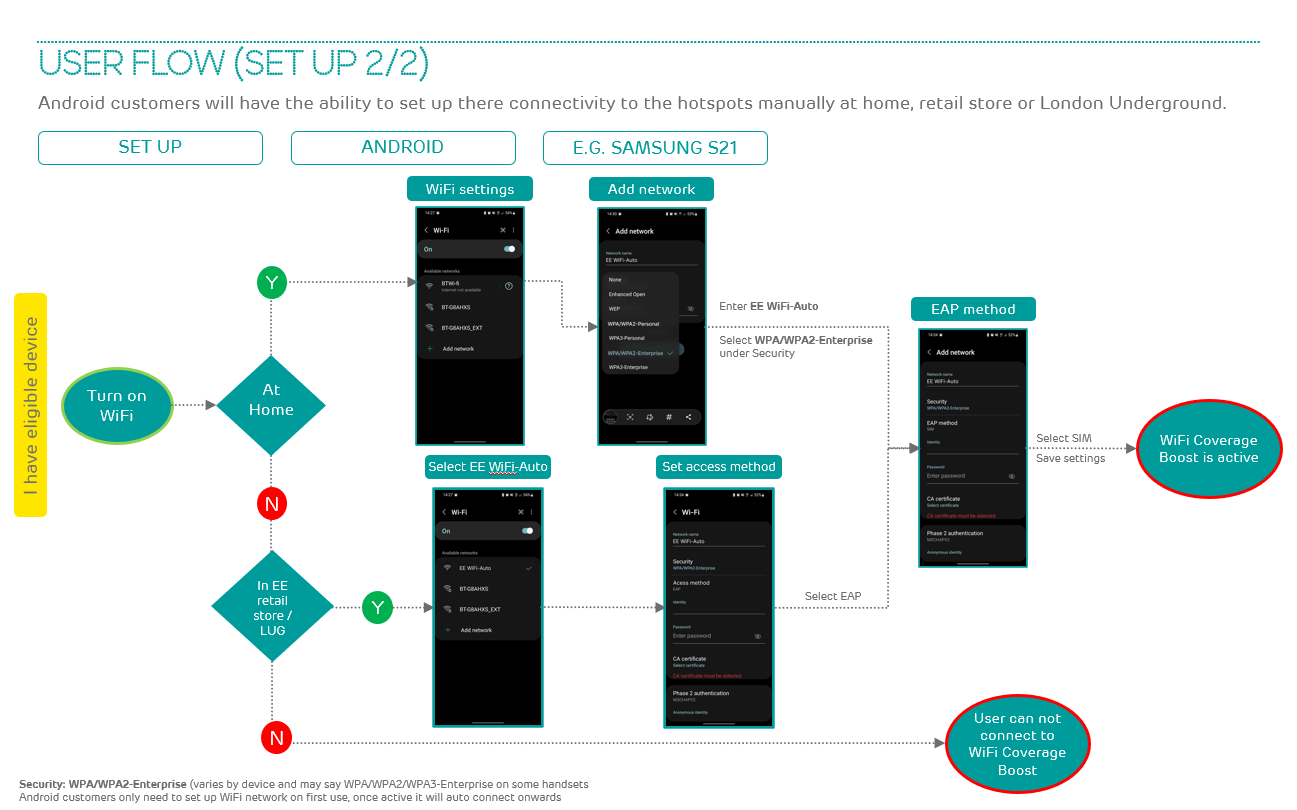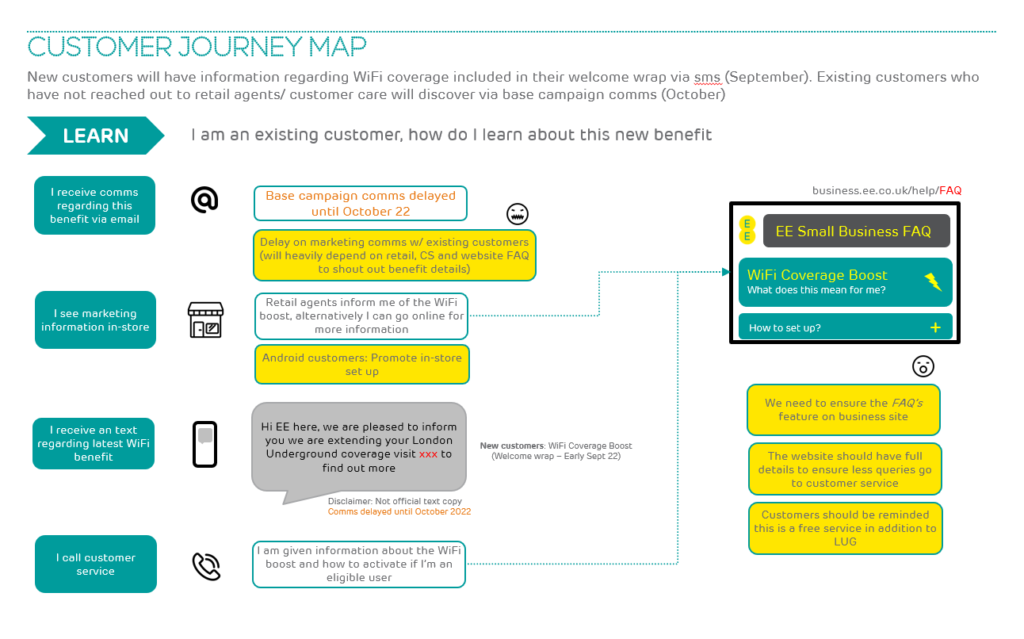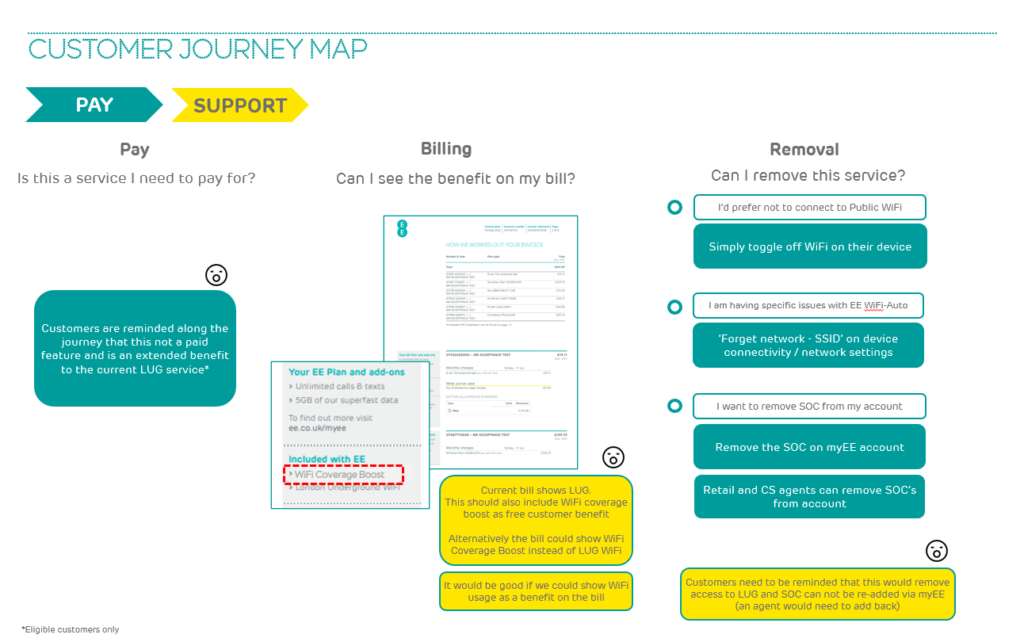EE WiFi Coverage Boost
Problem Statement
EE customers are constantly losing access to data when they most need it while travelling across the UK, having the ability to always access some form of data isn’t always a given.
How might we educate customers on how to establish seamless cellular connectivity while on the go.
Business Proposition
New and existing customers who use their data in poor connectivity areas will be connected to WiFi coverage boost, this will enable a user’s mobile to automatically connect to local BT broadband home hub signal when 4G/5G connection is poor.
My Role
Lead Service Designer
Design Artifacts
- Customer Journey Map
- User Flow
Tools
- Mural
- Figma
- Powerpoint
Key Project Stakeholders
- Project Manager
- Propositions Manager
- Product Manager
- Sales Enablement Manager
- Service Enablement Manager
Goals
To deliver coverage boost to SoHo (Small office, Home office) customers enabling them to seamlessly connect and highlight key customer touchpoints to improve product knowledge.
Ensure agents have tools/ resources before launch to assist customers along each journey step.
User Needs
Users need to understand the technology behind the product and how to set up the service (if self-serve is an option) and the key benefits it will provide their businesses as they travel for work purposes.
Approach
- Understand the steps for how a customer/ agent educates themselves on how to use the product.
- Map out the process for a customer to set up the prop.
- Ideate key customer scenarios and walkthrough journey expectations
Design Process
1. Discovery
My initial step was to investigate the current as-is process (if there was one) and establish an end-to-end visualisation based on discussions with stakeholders on this project to then build into a to-be journey map. I used mural to template the ‘LBGUPS’ process and map out the steps a customer or agent would have to go through to get this product to function.
I had identified key steps within each sales channel and then understood certain scenarios which would create sub-steps along the journey. My thought process was to consistently question the end-to-end process for potential pain points and gather a deep-dive understanding of the true benefits of the proposition to a customer and how easy it would be to communicate these benefits to a customer in real time.
2. Define
During the define stage, my intention was to map out the customer and agent experience at a high level. Along the journey, there were various nuances that could potentially impact the customer experience if not called out as a risk. I have also identified moments of truth along the journey pathway. This design artefact solidified the key differences between an IOS user and Android users especially within the ‘GET’ phase of the journey.
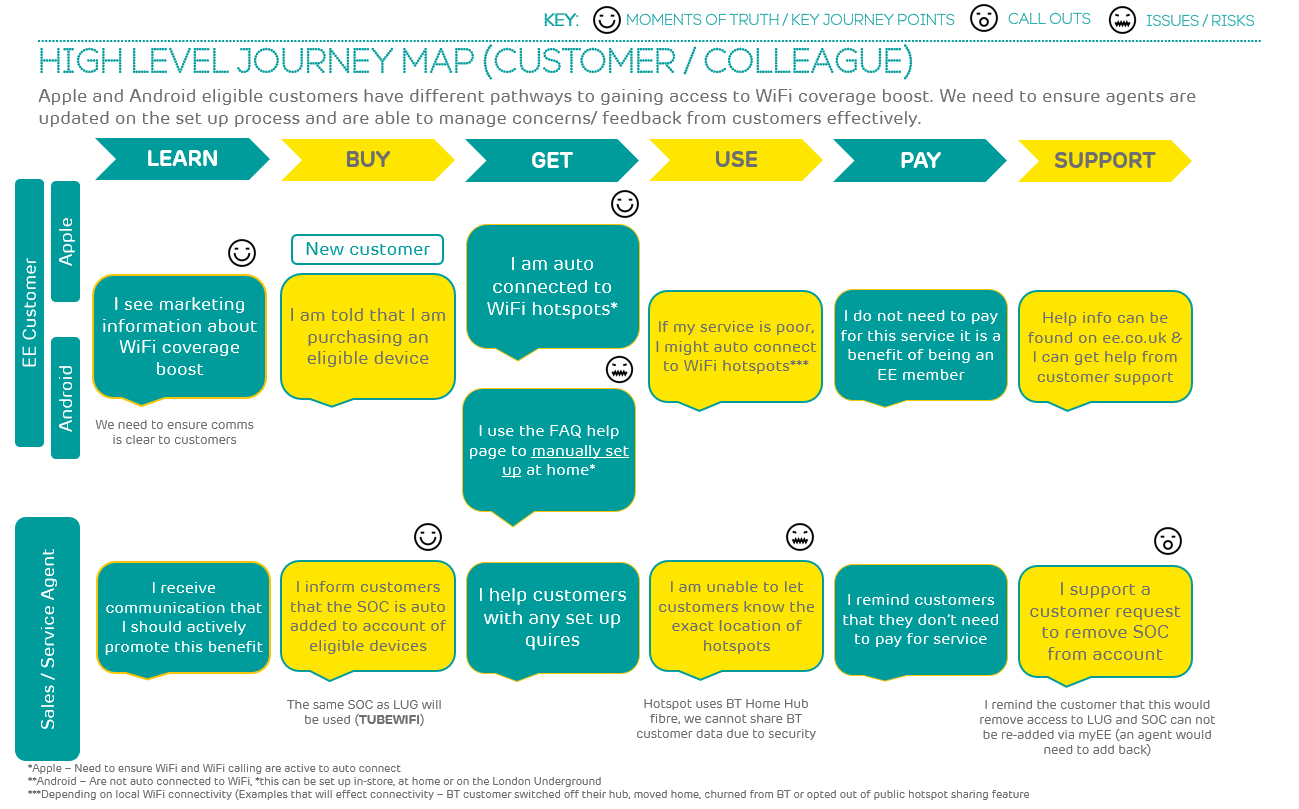
3. Develop
To further understand the set up process for IOS and Android users, I created a user flow to help identify the process for setting up/ activating the product with an eligible device.
The Android flow includes prototype (high-fidelity wireframe) screens to visualise what is expected for a user to activate the product for the first time during set-up and potential options to set up they could take.
4. Deliver
During my final design iteration within the project, I selected key moments within the ‘LBGUPS’ process and define various scenarios based on key customer journeys.
The overall goal for breaking down the scenarios was to visually present to stakeholders key moments within the journey and ensure potential operational requirements and systems are built based on the best experience for users.
XD Recommendations
All potential outcomes of my project recommendations were also referenced within my XD Summary which calls out (High-level XD requirements) and the highs (moments of truth) and lows (risks/ issues) of the journey. This was presented back to the stakeholders of the project as requirements that would need to be followed to ensure the best customer experience is provided.
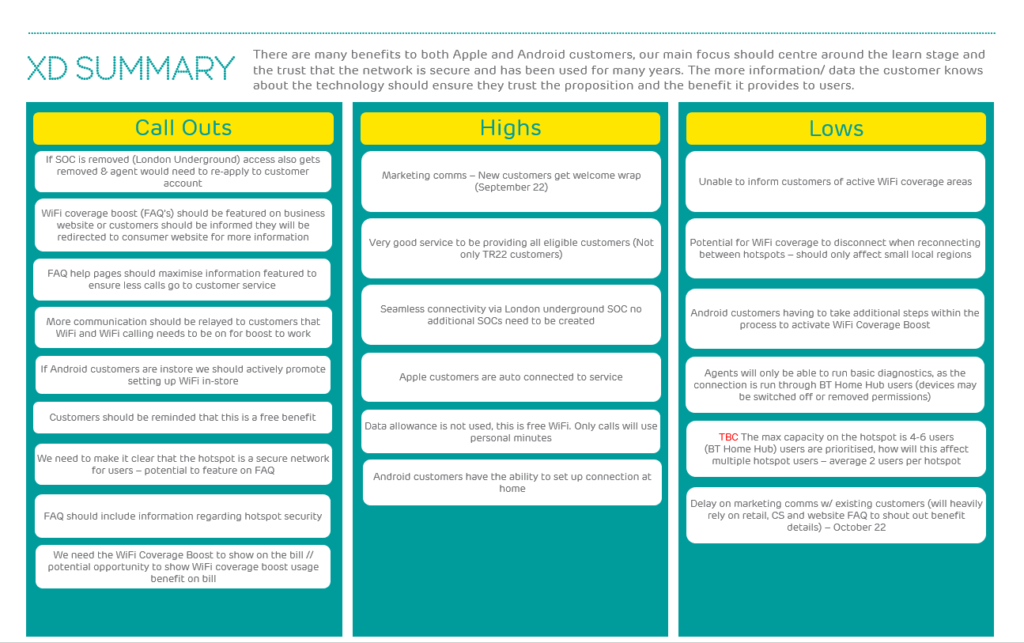
In Hindsight
"What could have been improved in the approach to the project"
Many of the processes within the journey were pre-established as a consumer proposition so there were limitations on what could be changed if presented as a key risk for SoHo customers, however much of the journey was clear and insightful to the overarching problem statement.
If there was more time to do deep-dive user research it would have been interesting to understand if customers have an issue with connectivity and how they would usually work around any issues currently. This would have provided more insight into if there could be a better way for customers to manage the set-up of the proposition.
Future project improvements; if Android users didn’t need to manually set up software before automatic connectivity, but the overall set-up integration of the product worked well within the main sales channels, given more information is provided to customers at the ‘LBG’ processes’
